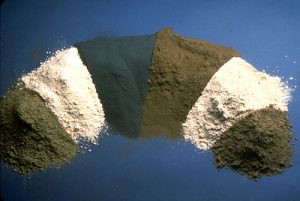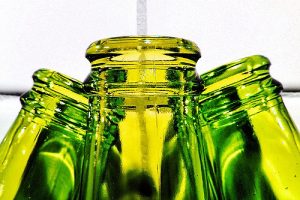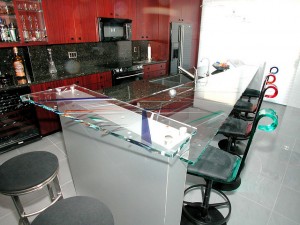Is glass coming to a concrete near you?
One area that the MacArthur Foundation examined was concrete. Concrete is a common building material, but it has some environmental downsides. Cement – a primary component of concrete – generates a lot of CO2 during its production. Various concrete mixtures can also contain toxic heavy metals like cadmium, arsenic and lead. These toxic inclusions come from fly ash and slag, which are sometimes used in concrete mixtures as a substitute for some of the cement.
Ground glass is being considered as a substitute for fly ash, which is in short supply. Fly ash is a residue generated by coal-fired power plants. No one’s building coal fired power plants today, and as more plants convert to natural gas, the supply of fly ash dwindles further. At the same time, the demand for concrete is rising, so finding an acceptable substitute for fly ash is a priority.
Substituting glass for fly ash could solve a couple of problems. First, it could create a viable market for recycled glass. That’s big because so many cities struggle with glass recycling, and it could remove some of the 8 million tons of container glass from US landfills every year. Second, it could reduce the demand for cement, which could in turn reduce cement-related carbon emissions significantly. Each ton of cement that’s produced releases a ton of carbon into the atmosphere.
Right now, using glass powder (called pozzolan) in place of fly ash would increase the price of concrete slightly – less than 5% – but it would decrease the carbon footprint of concrete to about 10% of its current size by reducing demand for cement. It would also eliminate the need to import fly ash from other places, like China and South America. The Foundation estimates that a pozzolan plant needs about 40,000 tons of container glass each year to keep up with the demand for ground glass, and multiple pozzolan plants would be needed to meet the annual demand for concrete. That’s still significantly less than the amount of glass that gets recycled, but concrete production offers a positive market for recycled glass – something that has so far been hard to come by.
Glassprimer™ glass paint is a specialized glass coating that bonds permanently to glass surfaces. GlassPrimer also makes a glass surface molecular activator that is designed to work with UV-inkjet glass printing processes. For more information about Glassprimer™ glass paint, please visit the rest of our site. If you’d like to purchase Glassprimer™ glass paint, please visit our online store .
Photo Credit: Sparkle Motion, via Flickr.com





